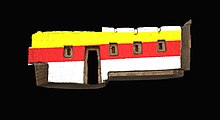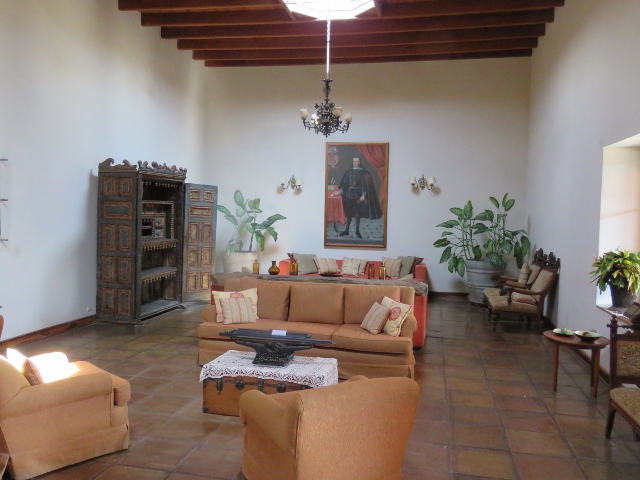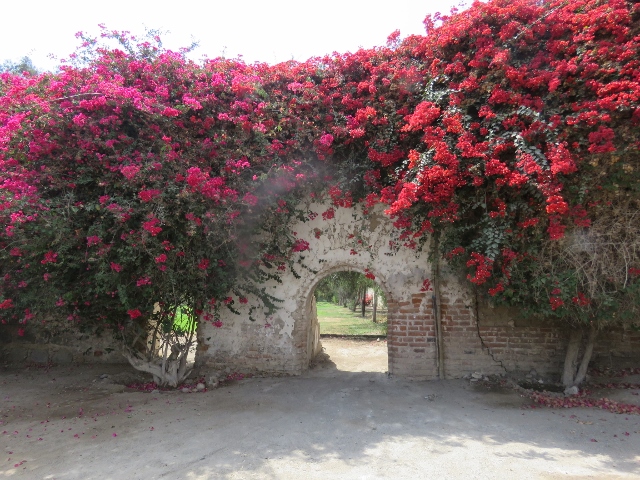Monday, December 16, 2019, Pisco (General San Martin), Peru
PISCO (GENERAL SAN MARTÍN), PERU
Named for the Quechua word for “bird,” the small city of Pisco was established by Spaniards in 1640 near the original indigenous settlement. In its early days, the city was bolstered by its nearby vineyards and the grape brandy they produced, which soon took on the city’s name. As you explore the Plaza de Armas, sample the sweet tejas, small treats made with pecans and dried fruits. Here, the mansion of Jose de San Martin stands adjacent to the grand Municipal Palace. Outside Pisco, the remarkably preserved Tambo Colorado recalls the Inca civilization with its adobe remains. The site is named for the generous use of color on its walls, still visible today.

The site owes its name to the abundant use of colors on the walls. Thanks to favorable (very dry) environmental conditions, many walls at Tambo, both internal and external, retain enough residual colored paint to accurately reconstruct what the original wall painting would have been like. Color here was often applied in horizontal strips of red, black, white, and yellow ochre atop stucco, and variation in color would accentuate architectural features such as niches. Trapezoidal niches at Tambo have one or two recesses each, likely used for the placement of important objects. As with all Inca constructions, the overall dimensions of niche construction are standardized across the entire site.
Remains of Tambo Colorado
The remains we visited today are located just inland from the south coast of Perú in the Pisco River Valley about 25 miles along the highway to Ayacucho, close to the town of Pisco. Note to location of Cusco relative to Pisco and Arequipa where we were day before yesterday.

We explored a remnant of the mighty Inca empire and enjoyed lunch in a
traditional Peruvian hacienda. In the
mid-15th century, the chieftain of the small highland kingdom of Cuzco
transformed western South America. Pachacutec,
or “Earth Reformer,” conquered a collection of neighboring states, including
the coastal kingdom of Chincha. Tambo
Colorado, or Puka Tampu in the Quechua language, is named for the red adobe
clay used in the construction of many of its buildings. This well-preserved complex is believed to
have been used as an administrative and military center on the road between the
newly conquered coastal territories and the mountainous Inca heartlands. After our tour, we enjoyed lunch at Hacienda
San José. In its 18th-century heyday,
the fields here produced lucrative sugarcane crops. We visited the beautiful manor house, private
baroque church, gardens, and patios of this colonial jewel before enjoying a
delicious buffet and traditional dance show.
Niches for idols; note trapezoidal shape and remaining color.
Note shape of doorway; add strength to opening for earthquake survival.
Spaniards attempted to Christianize Incas.
Inca jewelry.
On our way to second stop and lunch.
Modern aqueduct.
Gate into Hacienda San José.
Dining area.
Pisco sour - 'mmmmmm.
Cotton bale.
Private Baroque church.
Monkey puzzle tree.
On our way back to cruise ship; note political ad on wall.
Banana trees.
Chicken farms; most popular (least expensive) food in South America.
Note roof water tank and rebar raising from roofs. As long as constructions are "not completed," there are no property taxes - clever.
We will sail tonight for Lima. Diane and I (along with 70 others) will disembark cruise ship for 4 days will we fly to Cusco to spend two days acclimating to 11,000 altitude in preparation for a day at Machu Picchu.







































































































Comments
Post a Comment